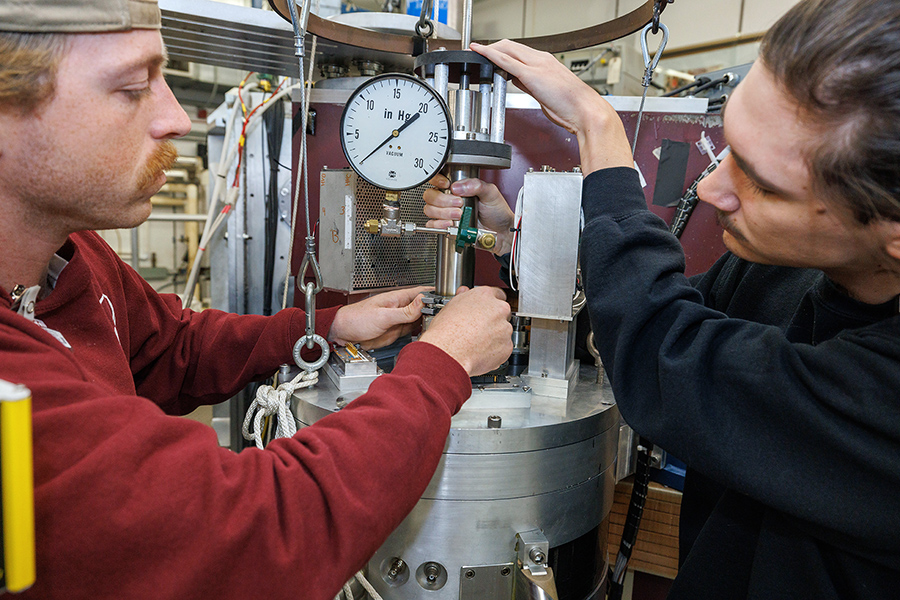Thoracic surgeons at the Center for Precision Surgery in the Abramson Cancer Center at the University of Pennsylvania led the clinical trials evaluating the imaging agent in lung cancer, in a partnership with the Indiana-based manufacturer, On Target Laboratories. This is the second approval for Cytalux, following an approval last year for ovarian cancer surgery, also based on clinical studies in which Penn Medicine led one of the largest sites in country.
“The availability of this imaging agent has major implications for thoracic surgery and lung cancer patients, who make up the vast majority of thoracic surgery cases,” said Sunil Singhal, MD, the William Maul Measey Professor in Surgical Research and director of the Center for Precision Surgery at Penn Medicine. “It will allow us to do less invasive operations, find additional cancer, and more accurately detect any remaining cancer, potentially saving patients from reoperation or additional therapy.”
More than 130,000 Americans die of lung cancer each year, making lung cancer the leading cause of cancer mortality in the country. Lung cancer mortality is high largely because it tends to be diagnosed at later stages when the tumor has begun to spread. About 20 percent of cases, or roughly 50,000 per year, are localized enough to be treated surgically, in the hope of a cure. But even with surgery there is a high chance of recurrence, which implies that standard visual and tactile inspection often fails to detect all cancerous tissue.
Cytalux was designed to enhance this detection rate in surgeries where the tumor is removed. The imaging drug is infused into the patient pre-operatively, and binds to a surface protein called the folate receptor alpha (FRα), which is expressed at abnormally high levels in lung tumors and several other types of tumor. The imaging agent is designed so that, under illumination with infrared light, it will produce a glowing emission that can be detected by a special infrared camera. The camera outputs to a real-time display, enhancing the surgeon’s ability to see probable cancerous tissue. This type of technology is known as intraoperative molecular imaging.
The randomized Phase III ELUCIDATE trial (NCT04241315), completed last year, showed that the imaging agent helped detect cancer that would have been missed by conventional techniques in more than 50 percent of patients with confirmed or suspected lung cancer. Singhal was the principal investigator of the multi-site study and presented the results at the American Association for Thoracic Surgery Annual Meeting in May 2022.
Penn Medicine has led the field of intraoperative imaging, driving advancements to bring this imaging agent to patients. As a pioneer in the field of tumor imaging, Singhal has been working with Cytalux for nearly a decade, spearheading efforts to study it in hundreds of surgeries, in both clinical trials and exploratory studies, for ovarian and lung cancer. The Center for Precision Surgery and its affiliated Penn Medicine researchers have also developed several other innovative technologies for imaging brain, breast, head and neck, and urinary tract cancers.
“Today’s approval gives thoracic surgeons a new tool to accurately detect and remove cancer tissue, while sparing healthy lung tissue,” Singhal said. “With intraoperative molecular imaging, our ultimate goal is to improve patient care through more precise surgery.”
Editor’s Note: Funding for Cytalux clinical studies conducted at Penn and the Center for Precision Surgery was provided by On Target Laboratories.
###
Penn Medicine is one of the world’s leading academic medical centers, dedicated to the related missions of medical education, biomedical research, and excellence in patient care. Penn Medicine consists of the Raymond and Ruth Perelman School of Medicine at the University of Pennsylvania (founded in 1765 as the nation’s first medical school) and the University of Pennsylvania Health System, which together form a $9.9 billion enterprise.
The Perelman School of Medicine has been ranked among the top medical schools in the United States for more than 20 years, according to U.S. News & World Report’s survey of research-oriented medical schools. The School is consistently among the nation’s top recipients of funding from the National Institutes of Health, with $546 million awarded in the 2021 fiscal year.
The University of Pennsylvania Health System’s patient care facilities include: the Hospital of the University of Pennsylvania and Penn Presbyterian Medical Center—which are recognized as one of the nation’s top “Honor Roll” hospitals by U.S. News & World Report—Chester County Hospital; Lancaster General Health; Penn Medicine Princeton Health; and Pennsylvania Hospital, the nation’s first hospital, founded in 1751. Additional facilities and enterprises include Good Shepherd Penn Partners, Penn Medicine at Home, Lancaster Behavioral Health Hospital, and Princeton House Behavioral Health, among others.
Penn Medicine is powered by a talented and dedicated workforce of more than 52,000 people. The organization also has alliances with top community health systems across both Southeastern Pennsylvania and Southern New Jersey, creating more options for patients no matter where they live.
Penn Medicine is committed to improving lives and health through a variety of community-based programs and activities. In fiscal year 2021, Penn Medicine provided more than $619 million to benefit our community.


